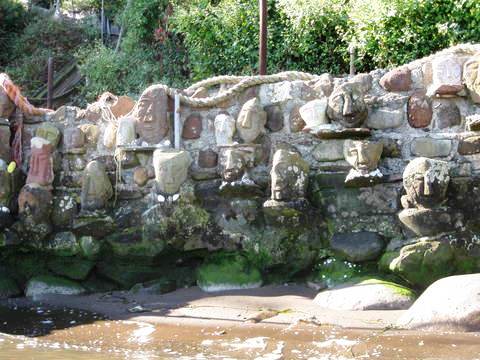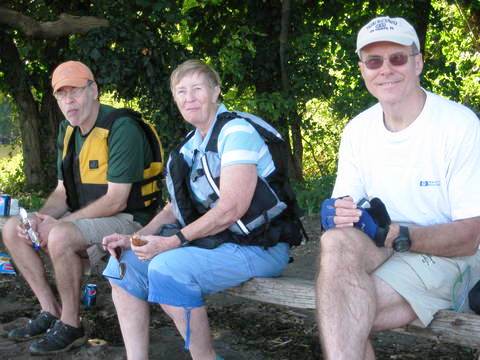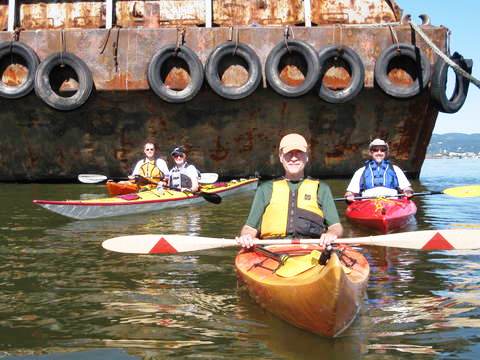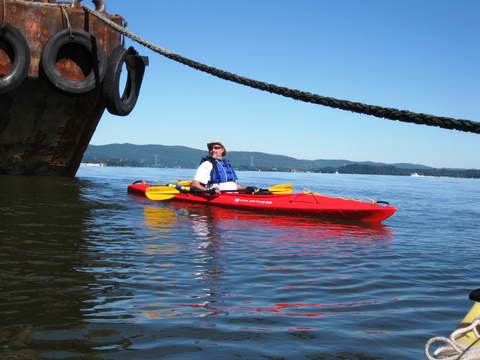|
Here's some history on André the spy... No one knows for sure what might have happened if [Benedict] Arnold and André had been successful, Johnson said, but control of the Hudson River was paramount for victory. "If the British controlled West Point, then they controlled the Hudson," Johnson said. The colonies and their major supply lines would have been split in two if the Americans had lost control of the river, Johnson said. And Arnold didn't stop with the West Point documents, he also provided André with a detailed itinerary of Gen. George Washington's plans for the next several days. "They might not only have bagged West Point, but they might have bagged General Washington," Johnson said. That would have crushed Americans' morale at a time when they were being sorely tested, with food and munitions harder and harder to obtain. Arnold had property, income, a beautiful young wife and Washington's respect and support, Diamant said. Americans viewed him as a hero for helping the patriots defeat the British at Saratoga, a battle considered the war's turning point. But Arnold saw things differently, Diamant and Johnson said. Ego, they said, played a tremendous role. Arnold repeatedly told people that he had not been given proper status as a military commander and had not been financially compensated properly by his government. Prior to his betrayal, Arnold had been put in command of West Point, and a fort under construction was to be named in his honor. Instead it was named Fort Clinton; its remains are near Bear Mountain. Arnold conspired to meet with André on Sept. 21, 1780. André came ashore in Haverstraw and met with Arnold in nearby woods, where Arnold turned over the plans and Washington's schedule. The men then went back to a nearby home until morning. They heard the Americans firing cannons, chasing off the HMS Vulture, the ship that had taken André to Haverstraw Bay. He was forced to make his way back to the Hudson's east shore via the Kings Ferry that ran between Stony Point and Verplanck. André was essentially abandoned in Westchester County, and wandered around trying to find British lines. He heard rumors about American patrols and headed west to Tarrytown, where he met three men he thought were Loyalists. They were Patriots, who found the West Point documents and took André into custody. Johnson said these men, John Paulding, Isaac Van Wart and David Williams, did what they were supposed to do and should be recognized. Wreaths will be placed at Paulding's and Van Wart's graves Saturday in Westchester; Williams is buried upstate. "They captured André, found the documents and saved the nation," Johnson said. André was brought to Tappan, where Washington was headquartered at the DeWint House. Washington never met André, who was tried by a panel of leading generals, including Marquis de Lafayette, Baron Von Steuben, Nathaniel Greene and Henry Knox. They convicted him as a spy and sentenced him to death. George C. Hewitt |
Haverstraw on the Hudson
by Betty Wiest
Sunday, September 20, 2009
It looks as though there are always people who will go paddling at the drop of a hat. In this instance the word went out about 5 p.m. on Saturday for a trip the following morning. Within a short time emails or phone calls generated interest from five members…George, Steven, Lori, Andy and Allen (who did not paddle). The weather forecasters predicted a perfect day. And it was!
Because I had participated in a waterway clean-up day in Haverstraw earlier in the week, and had paddled out of the Haverstraw Bay County Park several years ago, I keyed into this location or our Sunday outing. It’s a little over a half hour’s drive from Ridgewood.
This is a beautiful park with picnic areas, children’s playground, a 911 Memorial Park and the launch ramp. And, yes, clean restrooms.
Although we all started out with light-weight jackets, the temperature climbed so that short-sleeved T-shirts under our PFD's was adequate.
The Hudson River was quite calm when we departed at 9 a.m.. It had a very lake-like quality. By the time we returned there was a good bit of river traffic that generated continuous rolling swells.
So what was the major attraction? For me it was to revisit heads carved in red sandstone that a craftsman had placed in a stone wall along the water’s edge of his property just beyond the Tilcon plant in Haverstraw. Ted Ludwiczak, a native of Poland, has over 250 carved heads placed everywhere on his property. Years ago he was written up in the NY Times.
From there we paddled further south, our new destination water buoy #21. Before we got to the buoy though, George Hewitt with his eagle eye, spotted a large boulder in the water with the following inscription, “ANDRE THE SPY LANDED HERE SEPTEMBER 21, l780”. Hmmmm, we were a day early for the anniversary celebration. Have to do a little research on this.
We found a small sandy beach where we landed for a quick snack and a little exploration. At one time this was the site of two stone buildings and several cement picnic tables…now all was in ruin. It was a pleasant enough respite save for the large quantity of open garbage bags that had clearly been there for some time. This is one cleanup that needs to happen!
We continued on to the buoy, our turn-around point. Ever intrepid, George once again proved his Boy Scout leader exploration skills and expertly got out of his kayak to climb the rocks supporting the obelisk-type buoy. The only transients were the numerous cormorants that made it their home.
As we made our return trip, we passed by a series of four connected relic barges. The configuration created three triangle openings which everyone had fun paddling through.
By now the river had become riddled with rolling water adding to the excitement of the trip. Part of our group headed home. George and I finished our trip to the nearby marina (he has a friend who had a boat docked there). And I got some more great pictures.
To be sure, we’ll be back for a return visit.
Betty








